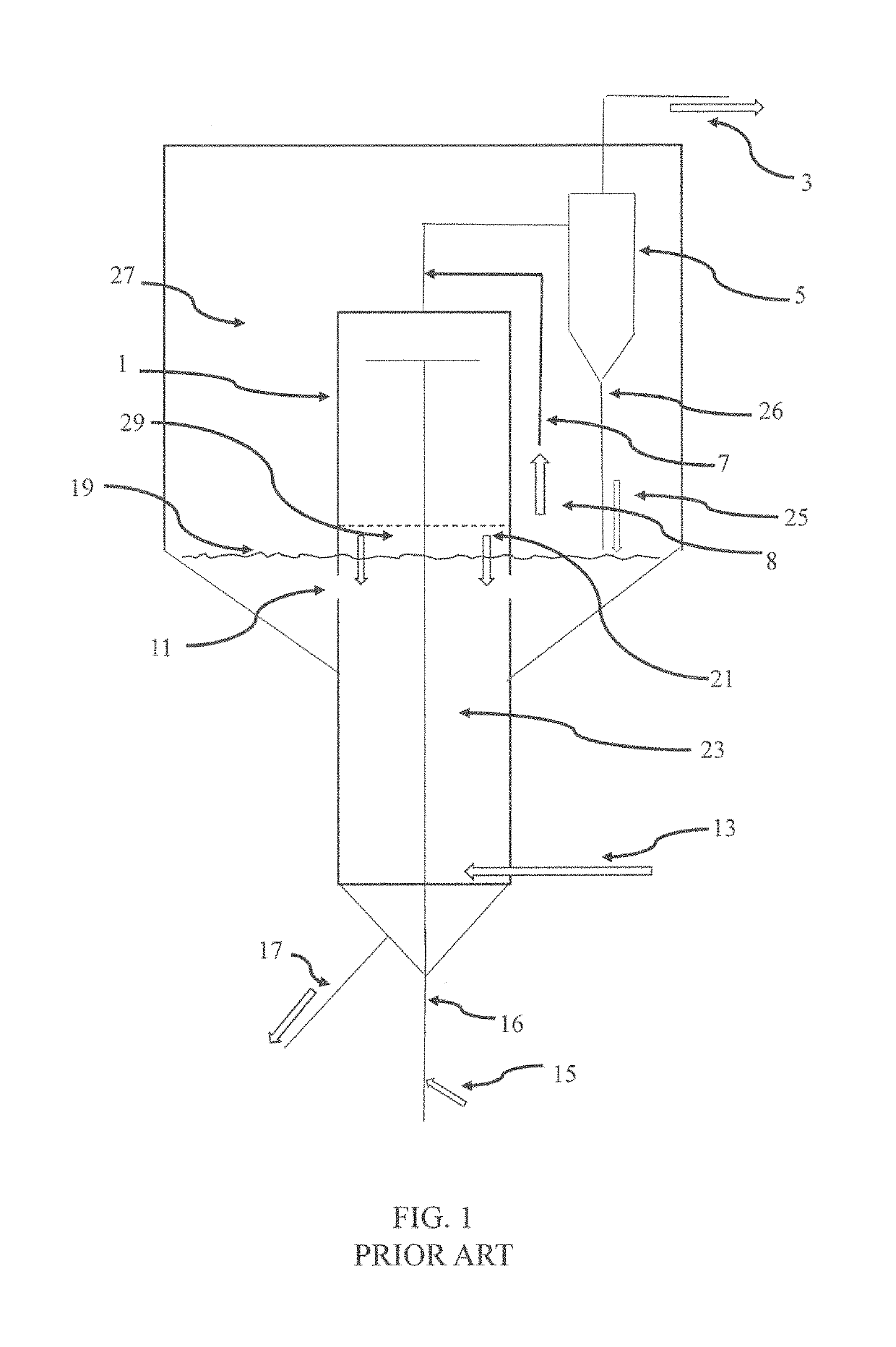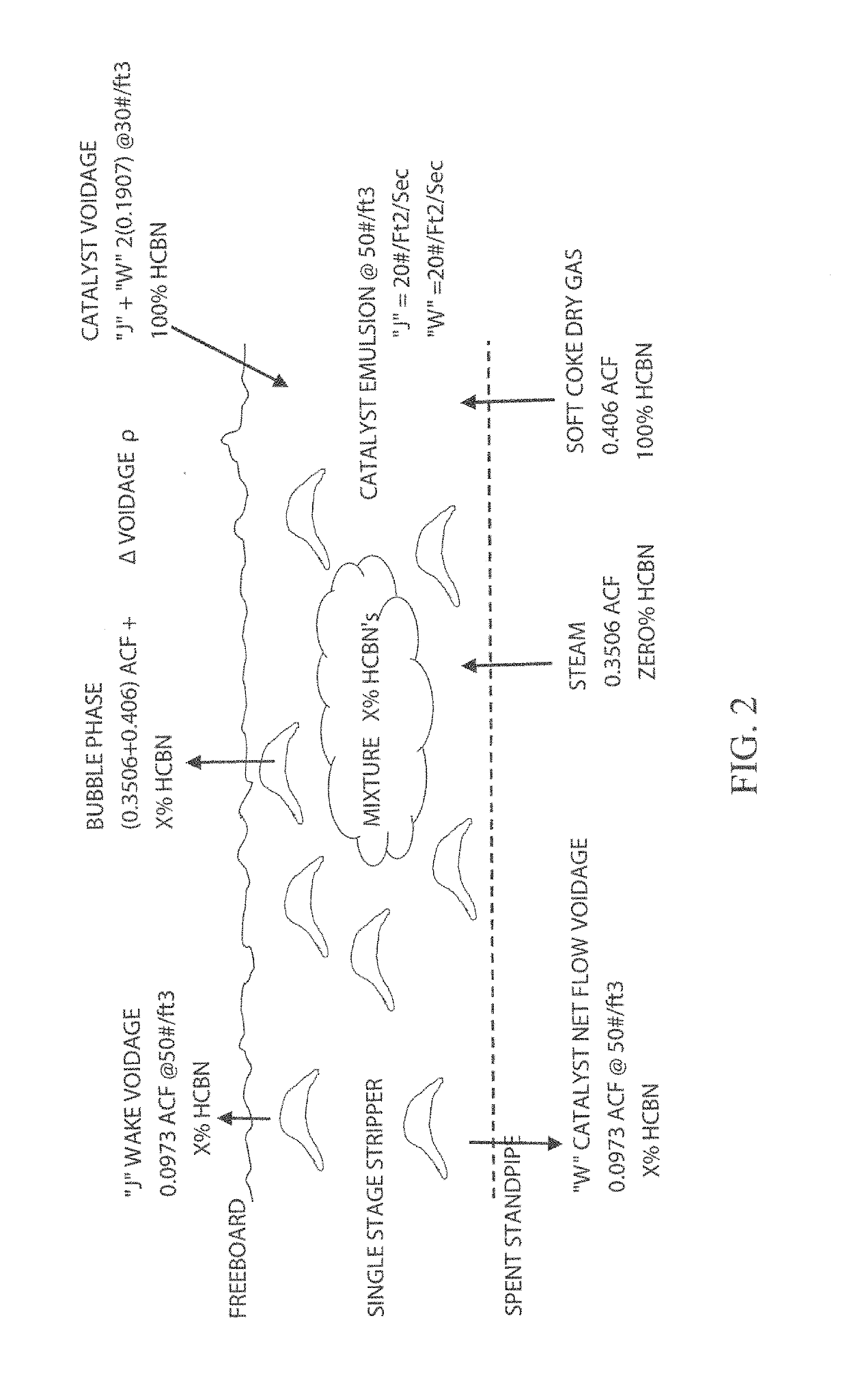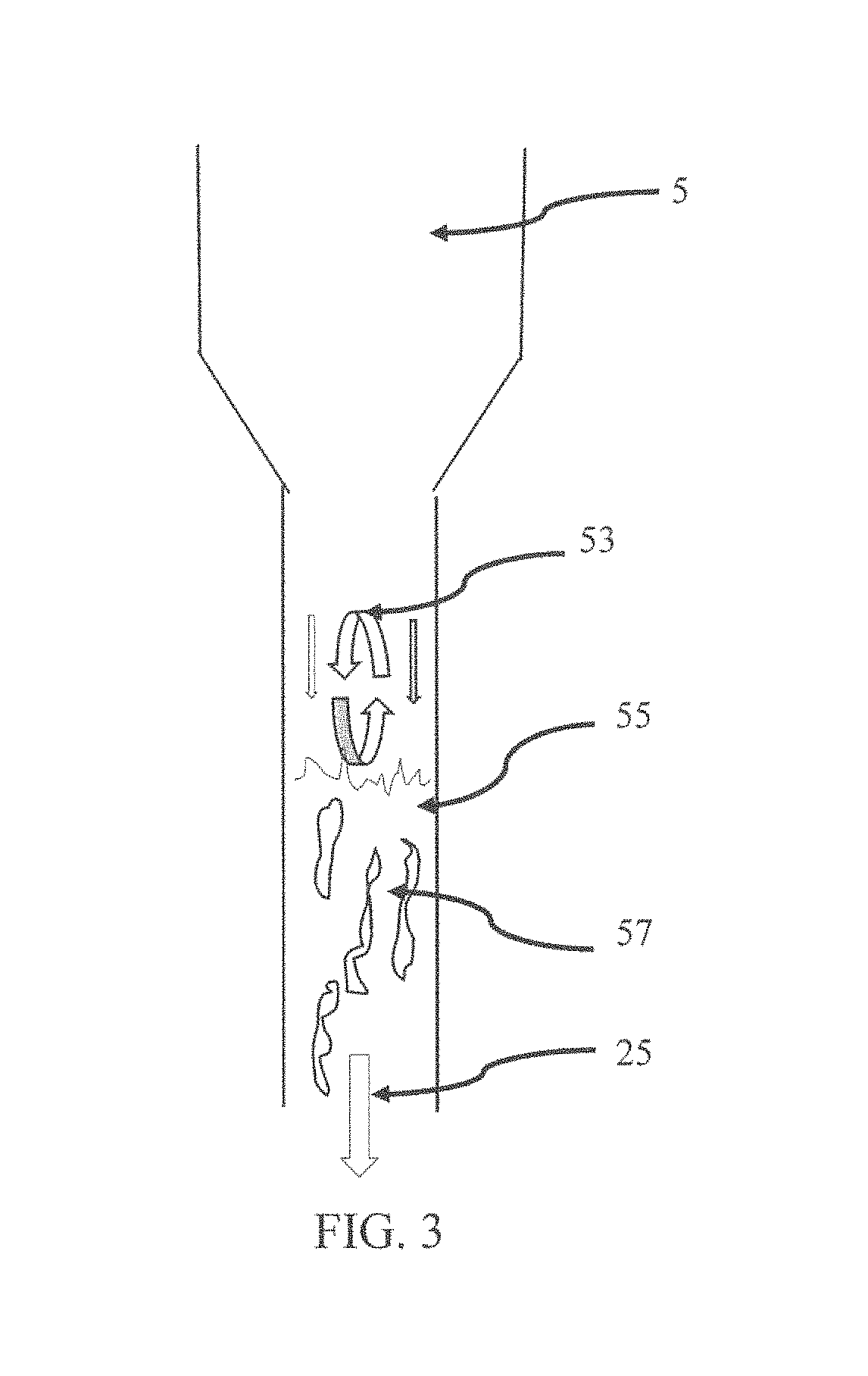Higher containment VSS with multi zone stripping
a technology of multi-zone stripping and containment, applied in the direction of separation process, dispersed particle separation, chemistry apparatus and processes, etc., can solve the problem of not only selectivity, but product composition between the two samples is enormous and very significant, and does not explain the high 15.6 wt, light cracking gas is being produced, etc., to achieve high degree of backmixing, low space velocity, and high residence time
- Summary
- Abstract
- Description
- Claims
- Application Information
AI Technical Summary
Benefits of technology
Problems solved by technology
Method used
Image
Examples
Embodiment Construction
)
[0062]FIG. 1 is a schematic representation of a typical high containment VSS and reactor stripper configuration. Feed injection nozzles 15 inject feed into a flowing stream of catalyst. The resulting suspension reacts rapidly and flows through a plug flow riser reactor 16 into the VSS separation chamber 1 where most of the catalyst is separated. The catalyst then flows down into the stripper section 23 along with some hydrocarbon underflow 21 that is still contained within the catalyst voids. The majority of the hydrocarbon vapor products and any entrained catalyst then pass through several single stage cyclones 5 housed within the reactor vessel 27 for final catalyst separation prior to entering the combined vapor product line 3. This entrained catalyst then flows from the cyclones through diplegs 26 into the catalyst bed 19 located in the outer annulus section of the reactor vessel 27. The vapor flow 8 in the reactor vessel 27 contains some but not all of the entrained hydrocarbo...
PUM
| Property | Measurement | Unit |
|---|---|---|
| superficial gas velocity | aaaaa | aaaaa |
| octane number | aaaaa | aaaaa |
| velocities | aaaaa | aaaaa |
Abstract
Description
Claims
Application Information
 Login to View More
Login to View More - R&D
- Intellectual Property
- Life Sciences
- Materials
- Tech Scout
- Unparalleled Data Quality
- Higher Quality Content
- 60% Fewer Hallucinations
Browse by: Latest US Patents, China's latest patents, Technical Efficacy Thesaurus, Application Domain, Technology Topic, Popular Technical Reports.
© 2025 PatSnap. All rights reserved.Legal|Privacy policy|Modern Slavery Act Transparency Statement|Sitemap|About US| Contact US: help@patsnap.com



